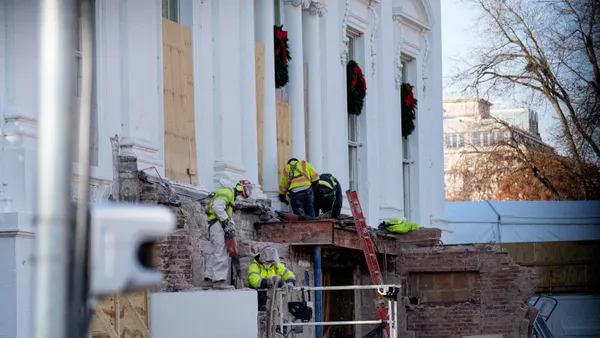Dive Brief:
- The Occupational Safety and Health Administration has fined a New Jersey contractor $71,400 and issued the company 29 safety violation citations related to crane use and chemical hazards, according to NJ.com.
- OSHA said that 26 of the 29 citations issued to RCS Construction were serious and, in addition to the crane and chemical violations, included improper storage of propane fuel cylinders as well as equipment and electrical hazards.
- Other citations OSHA issued RCS were for inadequate exit routes and signs, lack of a hearing conservation program, failure to provide a hazard communication program and lack of forklift training and maintenance.
Dive Insight:
Focus on issues of construction crane safety has intensified in the wake of several recent high-profile crane accidents in the New York area. In February, a crawler crane collapsed on the streets of Manhattan, killing a pedestrian and causing injury to other pedestrians and property. There was another crane collapse on New York's Tappan Zee Bridge project last month, but that incident did not result in any fatalities.
The February collapse, however, led to a citywide implementation of stricter crane rules, including a four-point plan spurred on by Mayor Bill de Blasio. The plan was met with resistance by some construction companies, which said the new rules were cumbersome and actually created more dangerous situations, as the new regulations required cranes be dismantled and then set back up more frequently.
A subsequent look at the city's crane inventory prompted a New York crane safety working group to recommend a "phase out" of older cranes not equipped with modern safety equipment. The group also suggested a crane age limit and the use of anemometers, black boxes and GPS tracking devices on all cranes operating in the city.
Along with increased OSHA enforcement is a 78% increase in fine amounts beginning this month for violations that occurred after Nov. 2, 2015. U.S. Secretary of Labor Thomas E. Perez called the agency's new fine structure a "credible deterrent" to potential violators. The new rate was part of the 2016 federal budget bill, which required OSHA and other agencies to get their penalties and fines in line with the Consumer Price Index. This marked the first rate hike for OSHA since 1990.











